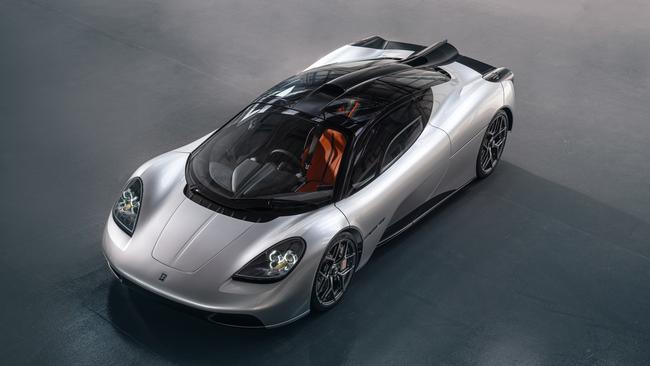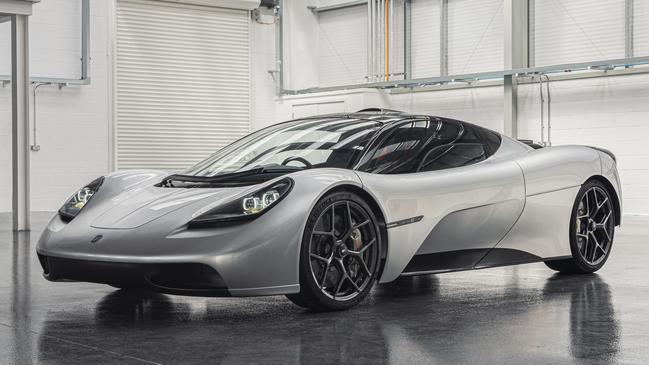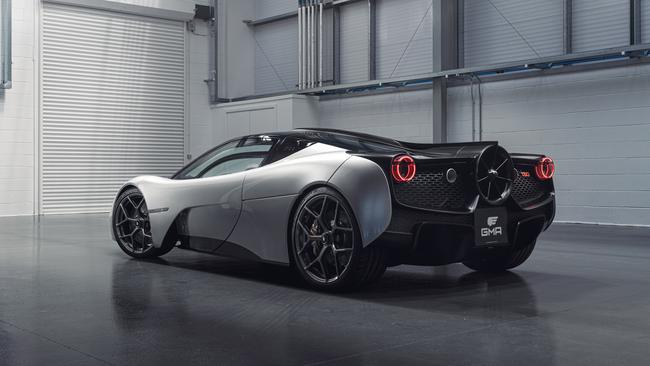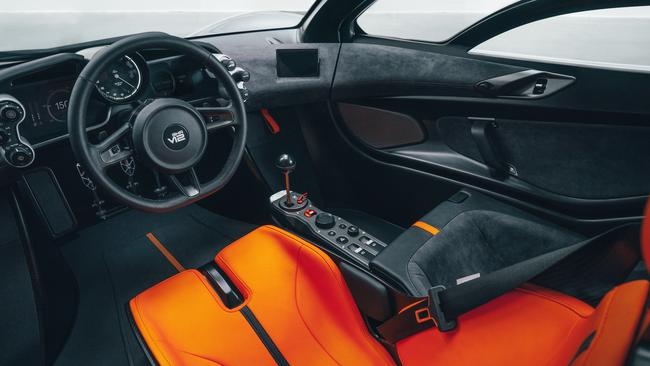Gordon Murray Automotive T.50 revealed: World’s greatest supercar
The man responsible for the holy grail of supercars has returned with an even more potent machine that is unlike anything on the road.

Motoring news
Don't miss out on the headlines from Motoring news. Followed categories will be added to My News.
The designer of the world’s greatest supercar has unveiled a follow-up act intended to bring the McLaren F1 into the 21st century.
Gordon Murray, architect of the record-setting McLaren F1 and designer of Grand Prix machines driven by the likes of Ayrton Senna, says the Gordon Murray Automotive T.50 is engineered to be the most driver-centric supercar ever built.

Like McLaren’s original road car, it features a central driving position, six-speed manual transmission, howling V12 engine and an uncompromising approach to weight reduction.
The T.50 weighs just 986 kilograms – about 600 kilos less than Ferrari’s range-topping SF90 hybrid. Its 3.9-litre V12 makes 487kW without the aid of turbochargers, revving higher than any production car offered to the public. The engine responds faster than any other car, picking up revs at a staggering rate of 28,400 revs per second, reaching redline from idle in just 0.3 seconds.

A close-ratio manual transmission side-steps modern paddle-shift gearboxes to offer drivers a closer connection to the car, and its suspension has been designed with road use – not lap records in mind.
Ferrari, Lamborghini and McLaren no longer make cars with a manual transmission, which makes this the only supercar with that option.

Murray says “the time is right to design the greatest analog driver’s car”.
“From the first touch of the titanium throttle pedal to the V12 screaming at 12,100rpm, the driver experience will surpass any supercar ever built,” he says.
“No other road car can deliver the package of power, instant responsiveness and driver feedback in such a direct and focused way while remaining comfortable, refined and usable every day.”

The T.50 will not be the fastest car on sale. Hybrid motors, all-wheel-drive, huge spoilers and race-like semi-slick tyres are not part of the package.
Instead, the machine combines sensible rubber with a fan on the back that helps produce downforce. The huge fan pays tribute to the Brabham “fan car” designed by Murray for the 1978 Formula 1 season, driven to victory by the legendary Niki Lauda at its single competitive outing.

Power steering works at parking speed to help when parking, but it fades out at higher speed to offer direct steering feel. A carbon fibre chassis and carbon brakes help keep weight down, and huge dihedral doors open upward to make it easy to enter and exit the car.
If that sounds magnificent, the price might give pause for thought.

Available to order from £2.36m ($4.3 million) plus taxes, the GMA T.50 is not a cheap machine.
Potential Australian customers can add $215,000 in import duty, $430,000 in GST and about $1.4 million in luxury car tax. Which brings the price to $6.35 million or so, to which Victorian residents lucky enough to register an example can add about $570,000 in stamp duty (NSW residents would only pay $315,000 or so).
But that’s cheap compared to 1990s McLaren F1 examples which sell for more than $20m today. GMA says it will build only 100 examples of the T.50, suggesting that the car might hold its value as the last truly analog supercar.
Originally published as Gordon Murray Automotive T.50 revealed: World’s greatest supercar
